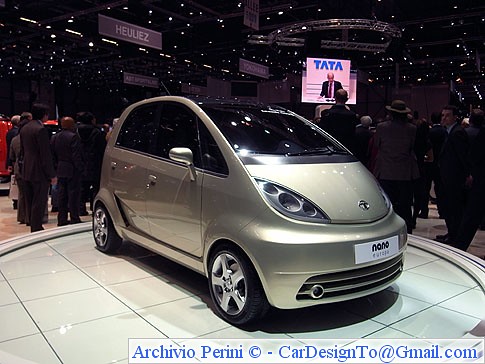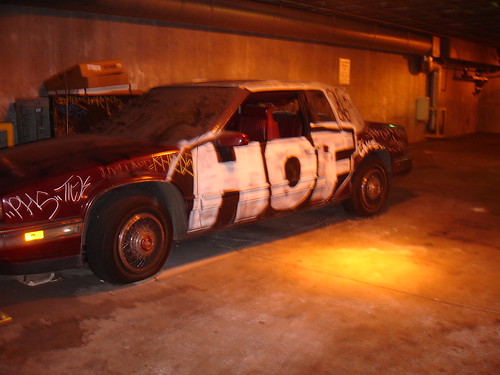Cash for Clunkers Update: Bill hits Speed Bump in the Senate;Hyundai Top Beneficiary of UK’s”scrappage” plan; Global sales slump reported
(Source: Detroit Free Press, The Detroit News, The Auto Channel, The Examiner, EEtimes.com)
Cash for Clunkers hit a speed bump Tuesday, June 16, 2009, in the U.S. Senate. It appears some Senators have “bailout fatigue” in general and “auto industry bailout fatigue” in particular. According to The Detroit News, Republican Senators are pushing back, citing the $85 billion in aid already provided to prop up ailing and bankrupt GM and Chrysler.
Some Democrats, including Diane Feinstien (D-California) also oppose the bill in its current form because they think it does not go far enough to improve fuel economy of vehicles on American Roads (there are, of course, Republicans in the opposition, but they oppose the measure because they think we’ve already spent too much money on the auto industry). As reported earlier, a Cash for Clunkers provision was added last week to a $106 billion bill to fund the wars in Iraq and Afghanistan. The idea was to attach a Cash for Clunkers provision to an existing bill already moving through the Senate so quick passage could be assured. Wrong.
Senators who support Cash for Clunkers need 60 votes to keep the Cash for Clunkers provision from being removed from the wartime funding bill. That could prove to be a problem.
Just hours after Sen. Judd Gregg, a New Hampshire Republican, denounced the inclusion of the cash-for-clunkers amendment as “unfunded baggage” on the war spending bill this evening, Senate Majority Leader Harry Reid delayed a vote until Thursday.
“It passes on new debt. Why would we do that?” Gregg asked in a floor speech. He said he would challenge the measure “at the appropriate time.” Senate Majority Leader Harry Reid delayed voting on the bill until Thursday.
Democrats control 58 seats in the Senate. But two — Edward Kennedy of Massachusetts and Robert Byrd of West Virginia — are ill. And Democrats led by Diane Feinstein of California have opposed the legislation as it stands, saying it does not do enough to boost fuel efficiency.
The legislation narrowly survived in the House, but for reasons mostly unrelated to the car-sales measure. Republicans were near unanimous in opposing the spending bill, objecting mostly to a provision that would boost International Monetary Fund lending.
“This bad legislation runs a con game on the American taxpayers and America’s military men and women,” said Rep. Mike Rogers, R-Brighton. He and five other Michigan Republicans voted no.
Michigan Democrat Debbie Stabenow urged quick passage of the stimulus.
“It will not help as a stimulus if it is done six months or a year from now,” she said.
If the Senate approves it, the measure will go to President Barack Obama for his signature. Then the National Highway Traffic Safety Administration will have 30 days to put regulations in place for the program which – under the war spending provision – will expire on Nov. 1.
In a related news item from across the Atlantic, Phakamisa Ndzamela writing for Reuters reported that South Korea’s Hyundai Motor Company has so far received the lion’s share of new car orders under the British government’s vehicle scrappage scheme, with sales boosted by an interest in smaller cars, according to figures obtained by Reuters.
The 300 million-pound ($491.9 million) scheme invites motorists to trade in cars more than 10 years old in return for a 2,000 pound subsidy to buy a new vehicle, in an effort to help an industry which has been severely dented by the recession.
The government earlier in the week said the scrappage scheme had resulted in 60,000 new orders in the period from April 22 to June 7. Out of the 15 car companies in the UK that Reuters contacted, Hyundai was in pole position, stating that its latest figures, which covered the period from April 23 to June 7, amounted to 8,246 new orders
Ford came second in the number of car orders at 8,050 followed by Toyota at about 7,800 vehicles. Following are company estimates of scrappage scheme new car orders covering the period April 22 to June 17:
- Hyundai 8,246
- Ford Motor Company 8,050
- Toyota Motor Corp 7,800
- Kia Motors UK 7,300
- Volkswagen 4,591
- Vauxhall 3,909
- Nissan 3,202
- Renault 2,600
- Peugeot 2,500
- Citroen 2,500
- Honda 2,335
- BMW and MINI 1,722
- Mazda 1,355
- Volvo 1,161
- Chevrolet 950
EETimes.com reports thatcrisis in the global automotive market is far from over. In May, the European market fell by 5 percent against the same month last year. Nevertheless, within the region, local markets developed extremely different, with Germany adding 40 percent (in terms of units) and Russia declining 57 percent. The reason for the hefty differences were the public incentives for buyers who scrapped their old car and bought a new one in some countries. The US market has declined by 37 percent over the first five months this year. In may, sales for light vehicles declined by almost 34 percent to 923.000 units. In contrast to other countries, the incentives in the United States will be connected to the fuel efficiency difference between old and new car. Japan also fared weak, with sales declining 17 percent in May and 22 percent for the first five months. the emerging markets, the crisis was far less pronounced. Brazil added 3 percent, boosted by an incentive program. India declined 1 percent in May, but over the first five months the market developed slightly positive with a plus of 2 percent. In China, the economic stimulus package and the reduction of sales tax on cars led to an increase by 55 percent in May. In that month, in China 728.000 light vehicles were sold. Thus, the Chinese market has become extremely relevant for European and Japanese car exporters. As a comparison: The entire European market (not restricted to EC countries) had a volume of 1.3 million units.
In light of all that’s reported, it seems the U.S. politicans needs to do everything to promote Automobile sales, including the passage of this Cash for Clunkers bill. Wrangling over the details of a bill that can spur auto sales could have some severe consequences on the economy. Will they do it? Let’s hope so!












